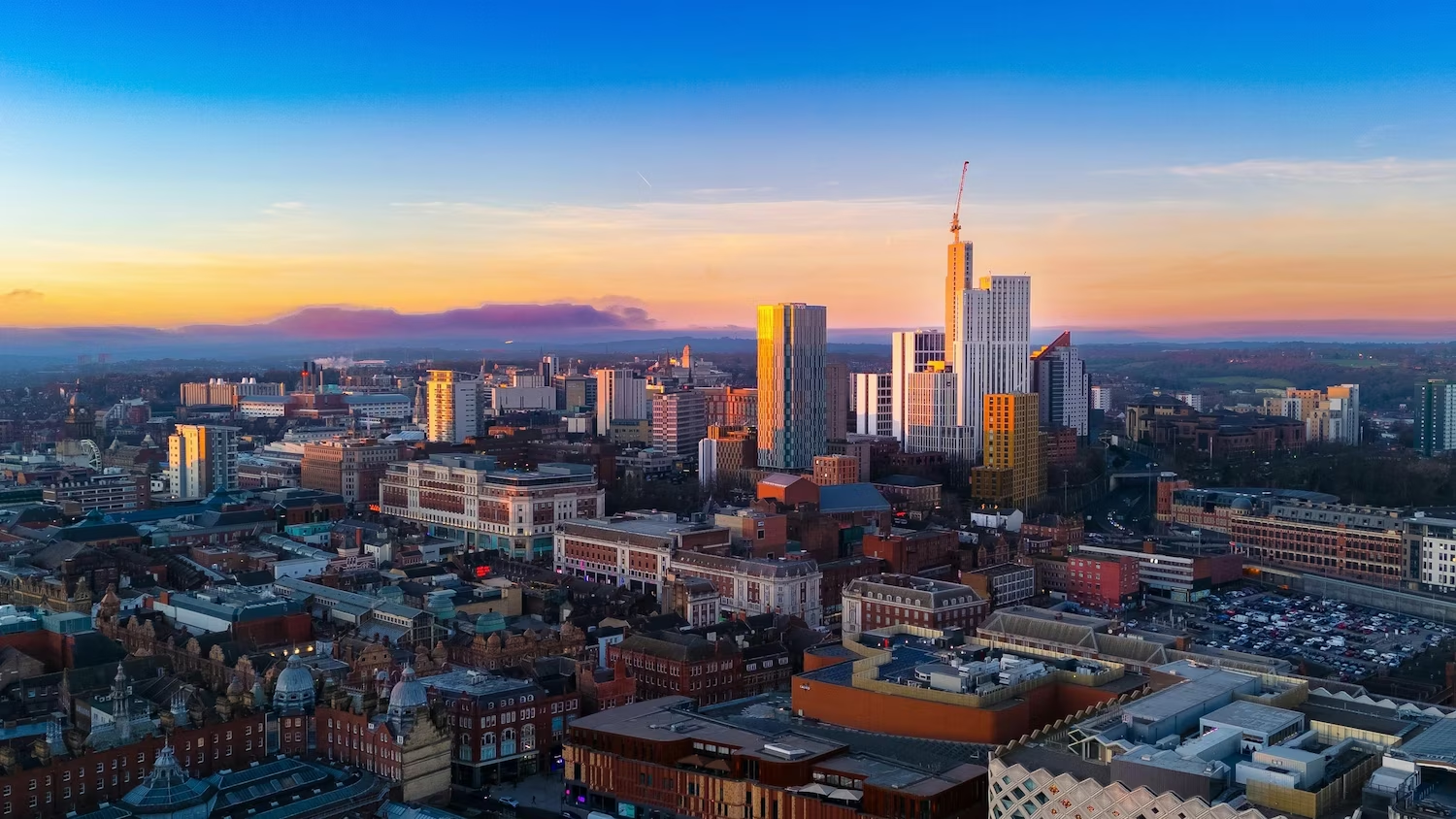The costs of buying UK property from overseas go well beyond the sale price. Between taxes, legal representation, renovation budgets, and ongoing ownership expenses, investors need a full financial picture before calculating yield or return on investment.
At Roberts Renovations, we have seen first-hand how realistic cost planning protects liquidity and confidence. By forecasting every line item early, overseas investors avoid unexpected delays, budget pressure, or cash-flow shortfalls once the purchase completes. This clarity allows you to focus on your goals, whether that is long-term rental income, capital appreciation, or portfolio growth.
Many clients tell us they were surprised by how quickly secondary costs add up. That is why our approach combines transparent cost modelling with hands-on support throughout property sourcing, renovation, and management, ensuring there are no hidden surprises later on.
Purchase Costs for Overseas Property Investors
When buying property in the UK as a non-resident, purchase costs depend heavily on the property’s value, whether you are buying as an individual or through a business, and if you already own other properties in the UK or abroad. These costs cover taxes, legal representation, and professional checks that every international investor must complete.
Stamp Duty Land Tax (SDLT)
As an overseas investor who does not qualify as a UK resident, an additional 2 percent Stamp Duty surcharge applies whether you buy as an individual or through a limited company. There are several variables, such as whether it is your first property or a purchase within a company. On a £250,000 property, Stamp Duty can vary from around £5,000 to £20,000 depending on these factors. We can help guide you in preparing these calculations but always recommend confirming figures with your accountant.
For more detail, see our Stamp Duty Guide and use the official GOV.UK Stamp Duty Calculator.
Legal Fees
Expect £1,200 to £2,500 for conveyancing and AML verification. Always appoint a UK-based solicitor experienced in overseas transactions to comply with HM Land Registry and anti-money-laundering requirements.
Survey and Valuation Fees
Typically £500 to £1,000, these confirm the property’s condition and fair value before exchange. Independent surveys can strengthen negotiations and prevent under-budgeting for renovation work.
For a complete overview of how these purchase costs fit within a broader investment plan, explore our Overseas Property Investment page.
Renovation and Setup Costs in UK Property Investment
Renovation and setup costs often represent the biggest variable in any investment. The UK market rewards investors who improve the quality, efficiency, and appeal of older properties, but clear budgeting is essential. These costs depend on condition, specification, and whether you intend to let the property furnished or unfurnished.
Renovation Costs (£10,000-£80,000+)
Typical works include new kitchens and bathrooms, re-plastering, flooring, heating upgrades, and energy-efficiency improvements such as insulation or double glazing. For very run-down properties, rewiring electrics, replacing the roof and insulation, and even installing a new boiler may be necessary. Investors pursuing a value-add strategy often modernise layouts to create open-plan living or add en-suites in HMOs.
Furniture and Interiors (£3,000-£10,000+)
Fully furnished lets require beds, wardrobes, dining sets, sofas, blinds, lighting, and small appliances. For HMOs or serviced accommodation, durable contract-grade furniture and coordinated styling increase occupancy and nightly rates.
Compliance and Certification (£300 – £2,000 +)
Before letting, every property must meet safety and efficiency standards. Certificates for gas and electrics, fire-safety measures, EPC ratings, and (if applicable) HMO licences all carry costs that vary by council and property type.
At Roberts Renovations we provide itemised renovation schedules before purchase, giving overseas clients visibility over potential costs. See our Home Renovation Packages and Interior Design Packages for examples of finish levels and budgets.
Real Example: Rothwell Buy-to-Let Renovation
Our Rothwell project in West Yorkshire demonstrates both the potential and the lessons of real-world investment.
We bought the property for £118,500, invested around £40,000 in renovation, and then refinanced rather than sold so we could move on to our next project. The total investment was roughly £160,000, and the post-works valuation came in between £175,000 and £180,000, generating £900 per month rent and producing a yield just over 6 percent.
We did not initially factor in a full roof replacement, which added unexpected cost. In hindsight, we should have either negotiated a lower purchase price or walked away. Even so, had we sold the property, the figures suggest we would have realised around a 10 percent return on investment. We also expected a slightly higher valuation, but at the time similar homes in the area, despite lower-quality finishes, were taking longer to sell, so holding and remortgaging was the better option.
This honest reflection illustrates that renovation projects require flexibility and risk awareness. By understanding where assumptions proved optimistic, we improve future sourcing and due-diligence processes. To see the final version of the project check out our buy-to-let Rothwell project porfolio page.
Ongoing Ownership Costs for Overseas Landlords
After completion, ongoing ownership costs shape profitability as much as acquisition costs. Planning for these ensures smoother management and predictable cash flow.
Letting and Management Fees
You’ll find several service levels. Rent-collection-only arrangements, where the agent markets the property, secures tenants, and collects rent, can start from about 7 percent of monthly income. We currently pay around 8 percent on most of our own properties.
A fully managed service, which includes organising repairs and inspections, typically ranges from 10 to 14 percent. Always review the small print for extra fees such as tenant-find charges, inventories, or renewal costs before signing any agreement. Sometimes paying slightly more for a reliable agent provides far better long-term value.
Maintenance Allowances
Maintenance costs can vary greatly depending on the condition of the property, but we recommend setting aside around 10 percent of monthly rent to cover repairs and replacements. This ensures that when issues arise, funds are already available.
Insurance
Comprehensive insurance is non-negotiable. Always insure for the rebuild value rather than the current market value, as the two figures can differ significantly. This ensures full cover should the unthinkable happen.
Bills and Utilities
Responsibility for bills depends on your strategy. In standard buy-to-lets, tenants typically cover all utilities, while in HMOs or serviced accommodation the landlord often pays. During renovation you’ll need to keep utilities active to protect the property; a small winter heating bill is far cheaper than burst pipes.
We can connect clients with our trusted estate agents, insurance partners, and service providers to ensure smooth setup. Utilities themselves are fairly standard and easy to arrange across the UK.
Yield, ROI and Capital Growth in the UK Property Market
Assessing yield and ROI is vital to ensure your project meets expectations. A property showing 7 percent gross yield may deliver closer to 5 percent net once management, maintenance, and insurance are included.
At Roberts Renovations we work directly with investors to define the key performance indicators that matter most. Whether your goal is immediate equity release from buying below market value, adding value through renovation, maximising rental yield, long-term capital appreciation, or overall ROI, we tailor every deal pack to match your chosen strategy.
Savills’ 2026 to 2030 forecast predicts UK property prices will rise by 22.2 percent nationally and around 28.8 percent in Yorkshire and the Humber, reflecting strong fundamentals for balanced, sustainable growth, in fact making it the strongest capital growth area across the UK over the next five years.
How Roberts Renovations Supports Overseas Investors
Managing a UK property from abroad requires trusted local partners. Our integrated model combines sourcing, renovation, and design, giving investors confidence that every stage is handled professionally.
• Property Sourcing: Identifying high-potential opportunities across West and North Yorkshire.
• Renovation Project Management: Ensuring quality control, cost discipline, and compliance.
• Interior Design and Furnishing: Delivering tenant-ready spaces with broad appeal.
• Transparent Reporting: Providing clear cost breakdowns, progress updates, and after-care support.
Conclusion and Next Steps for Overseas Property Investors
Understanding the full costs of buying UK property from overseas is essential to long-term success. From Stamp Duty and legal fees to renovation budgets, management, and insurance, every element shapes your investment’s performance.
At Roberts Renovations, we specialise in helping international investors make informed, transparent decisions. Our data-driven approach ensures that each project aligns with your objectives, providing the confidence to expand your portfolio responsibly and sustainably.
Ready to discuss your next UK investment? Arrange a consultation or continue reading our follow-up guide: Financing a UK Property from Overseas.
Frequently Asked Questions
How much does it cost to buy property in the UK as a foreign investor?
It depends on several factors, including purchase price, whether you buy personally or through a company, and if you already own other properties. Additional costs such as Stamp Duty, legal fees, and surveys should also be considered.
Do overseas buyers pay extra Stamp Duty in the UK?
Yes, non-residents pay a 2 percent surcharge on top of standard rates. This applies whether purchasing personally or through a company.
What are typical renovation costs for UK rental properties?
Light refurbishments start around £10,000, while full modernisations can exceed £80,000 depending on size and specification.
How much should I budget for property management fees?
Management costs vary based on service level. Rent-collection-only packages often start at around 7 to 8 percent, while fully managed services typically range from 10 to 14 percent.
How much should I set aside for maintenance each month?
Maintenance costs depend on the property’s condition, but we recommend reserving around 10 percent of monthly rent for repairs and replacements.
What insurance do I need as a landlord?
You’ll need building and landlord insurance, ideally covering the rebuild value rather than current market value. Specialist cover may be required for HMOs or serviced accommodation.
Who pays the bills on a UK rental property?
In most standard rentals tenants pay their own bills, but in HMOs or serviced accommodation landlords often cover them. During renovation, investors will need to pay basic utility costs.
Related posts

Understanding the True Costs of Buying UK Property from Overseas
Overseas investors often focus on the purchase price, but the true cost of buying property in the UK extends much further. This detailed guide explains every stage of expenditure, how to plan realistically, and what to expect from a complete investment journey.

How to Finance a UK Property from Overseas
Understanding how to finance a UK property from overseas is essential for investors looking to expand their portfolios. This guide explores funding routes, from cash and mortgages to bridging loans and company structures, with practical guidance from Roberts Renovations.

Winter Interior Design Ideas 2025
Winter is the perfect time to refresh your home. From candles and cushions to DIY crafts and warm colour palettes, discover simple ways to create a cosy, inviting space this season.


.jpeg)
